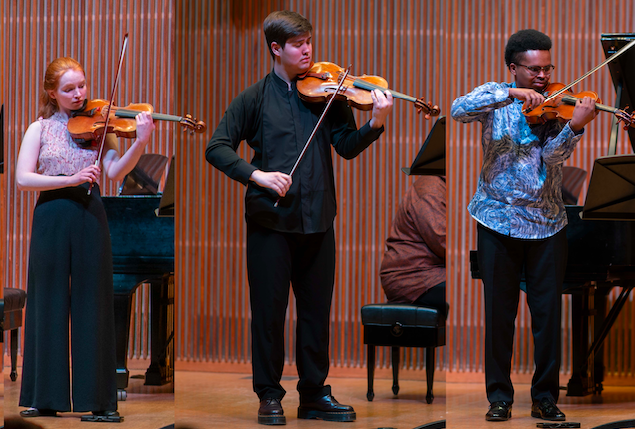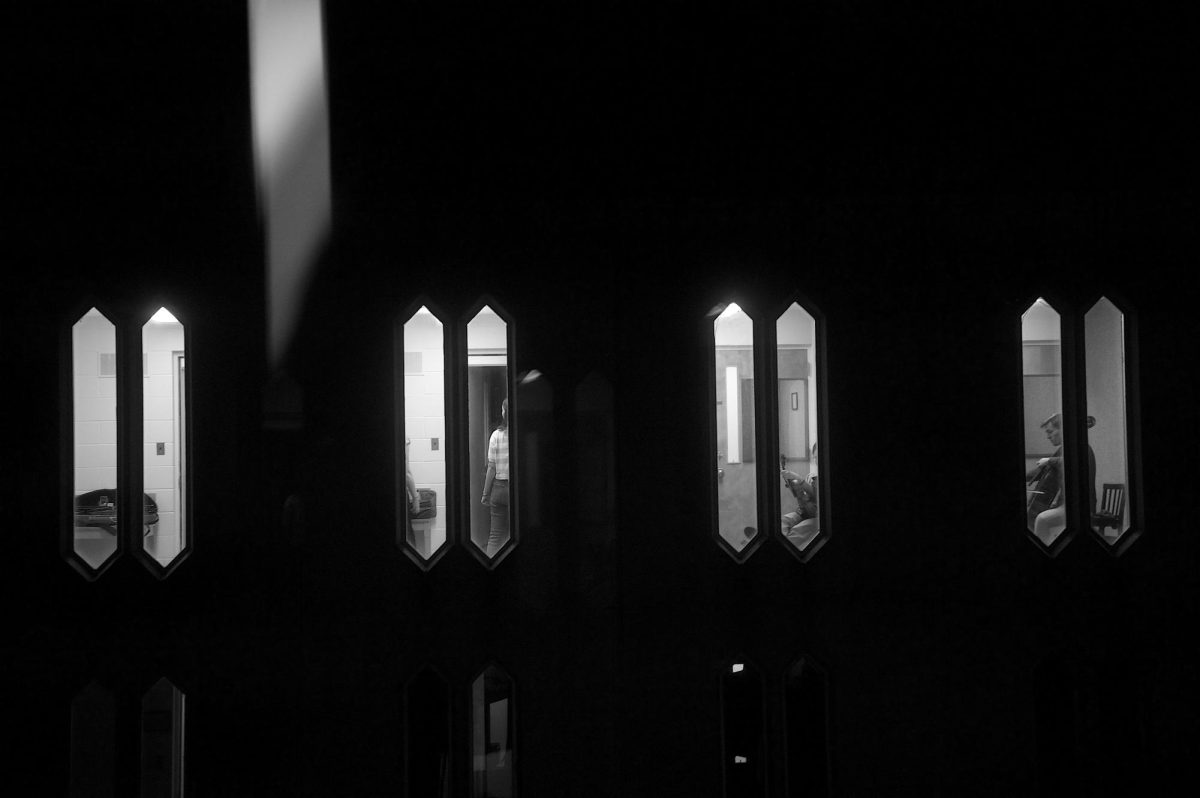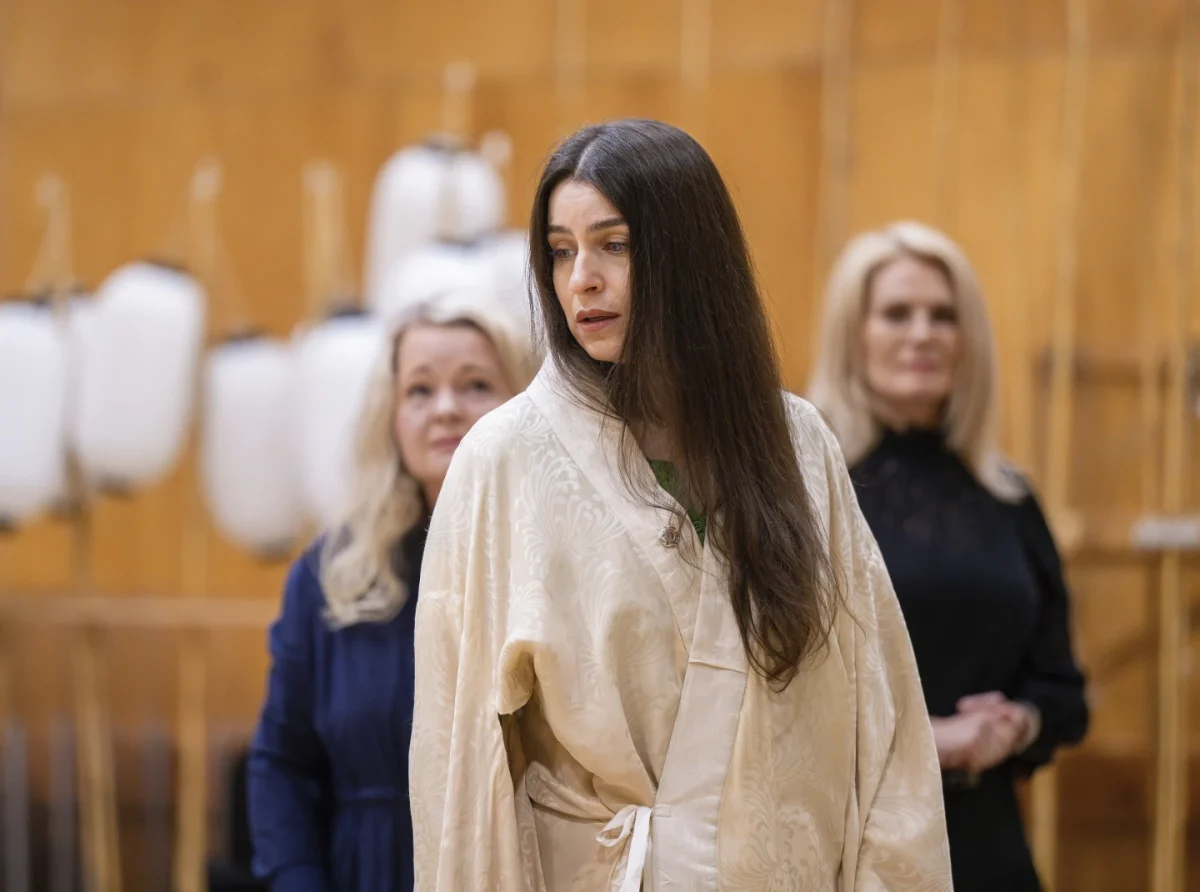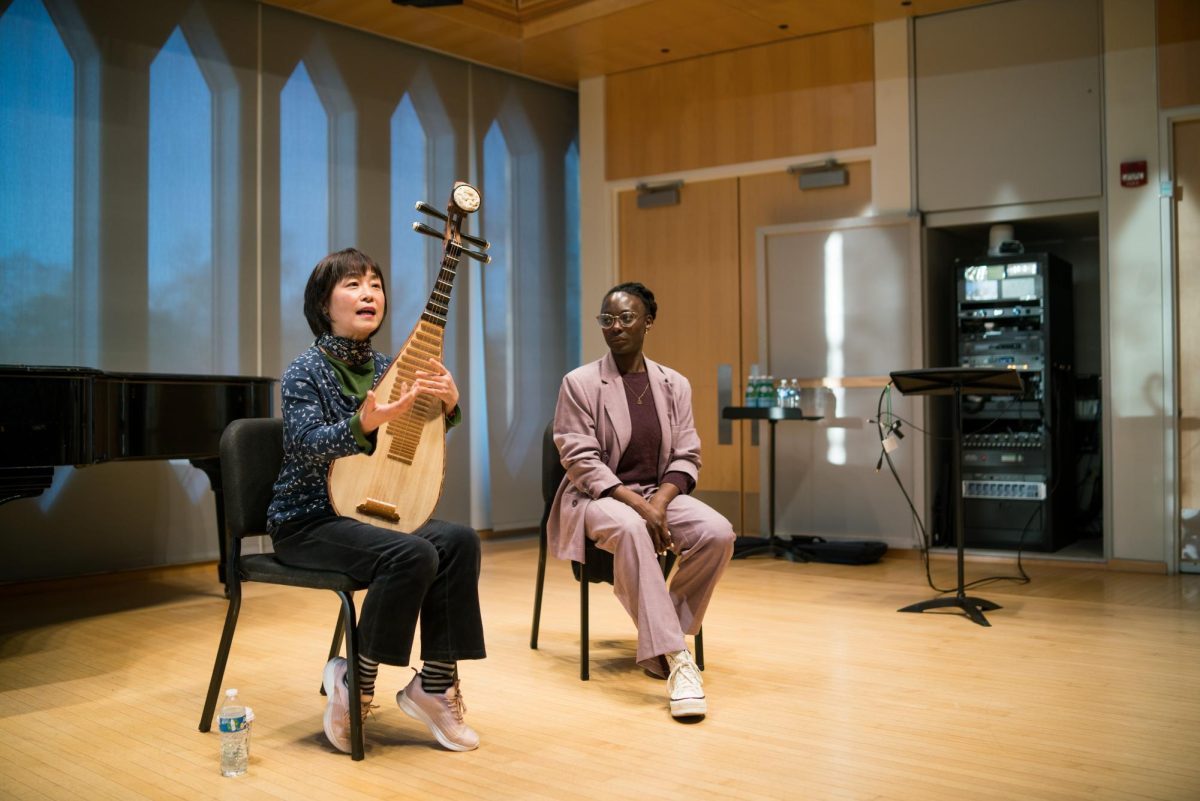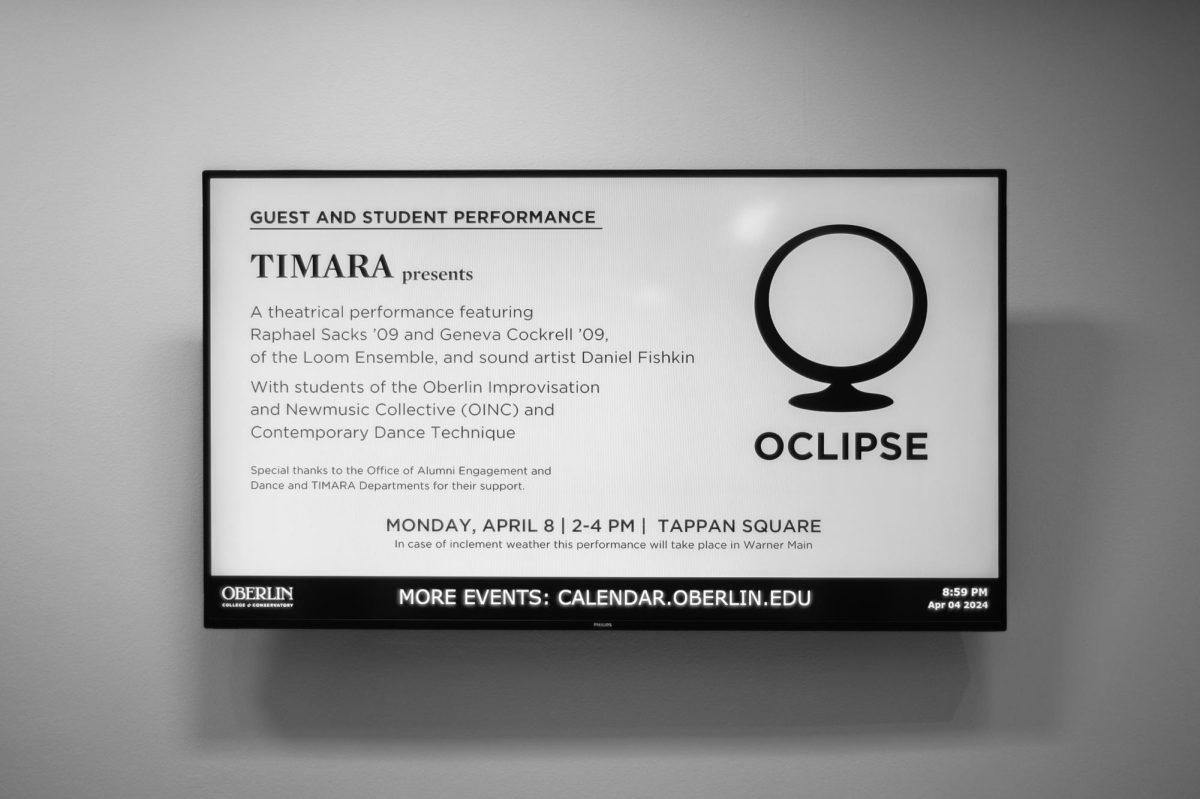On Tuesday, Professor of Viola Peter Slowik’s third-year students performed all seven of Paul Hindemith’s viola sonatas. The studio recital, which took place in Kulas Recital Hall, was the first time in history that all seven have been performed together on stage, and is the culmination of over a year’s work and collaboration.
“The idea came to them … about the middle of [their second] year,” Slowik said. “We started working on some of the harder stuff a little bit in the fall, [but] as with anything else at Oberlin, there are all these projects that get in the way. I would call it an accelerando to the finish here. Not quite the same time frame that a student would take on a research paper, but a similar arc.”
The recital, spanning a gargantuan two-and-a-half hours, was composed of some of the instrument’s most virtuosic pieces. Hindemith, a violist himself, is one of few composers who wrote specifically for the viola. The recital offered a valuable opportunity for students to not only play technically challenging pieces, but also get to shine a spotlight on their unique instrument.
“Honestly, if I wasn’t a violist, I probably wouldn’t like him,” Conservatory third-year Gracie McFalls, one of the instrumentalists performing in the recital, said. “Since there’s so little repertoire written for the viola, I feel like I have a soft spot for him because he appreciates my instrument. He has really lovely lyrical stuff, but also his technical stuff is a little psychotic. There’s still a melody in there somewhere, you just have to find [it]. It’s a very specific style.”
Double-degree third-year Lily Bronson, another student violist featured in the recital, echoed this sentiment in an email to the Review.
“It’s a whole different language than most of the other music I play; he doesn’t seem to follow a consistent set of rules when it comes to tonality and structure, and overall seems to just kind of write what he wants,” Bronson wrote. “However, now that I’ve become familiar with the strange language he uses, I often find it’s very satisfying to play. It’s clear that the music was written by a violist, for violists, albeit a very good violist writing very difficult pieces.”
Indeed, the sonatas performed Tuesday night are some of the hardest in all of classical repertoire. One of the pieces has a metronome marking of 600–640 beats per minute — for reference, most standard pieces are around 108–120 BPM. Playing a full sonata is a true exercise in stamina, even for a seasoned professor.
“At 66 years old, I’m still learning a lot,” Slowik said. “I’ve learned so much about just the markings. And what does mezzo forte mean? What does piano mean? Why does this piece go from double P to double F? And this piece goes from quadruple P to quadruple F. What does that mean? It’s a deep dive. It’s almost like an immersion into a whole different world.”
The studio’s hard work more than paid off in the end, with warm reception from both audience members and fellow studiomates.
“After the recital, my studiomates and I were so proud; we have such a good community of support that allows us all to be really successful and work really hard in our own ways,” Bronson wrote.
McFalls echoed Bronson’s sentiment and the rarity of the performance.
“I’m really grateful that I got to be a part of it,” McFalls said. “I think everyone played the best that they’ve ever played. Slowik sent an email last night that was like ‘This is really rare. This is probably as rare as a solar eclipse. Bask in this moment because when are you ever going to be in a class that does it this well?’”


